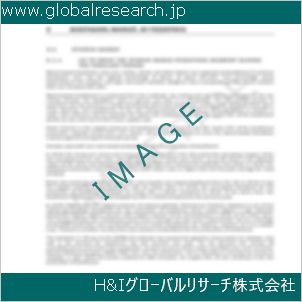1 Pea Protein and Pea Protein Powder Market Overview
1.1 Product Overview and Scope of Pea Protein and Pea Protein Powder
1.2 Pea Protein and Pea Protein Powder Segment by Type
1.2.1 Global Pea Protein and Pea Protein Powder Market Value Comparison by Type (2023-2029)
1.2.2 Organic
1.2.3 Anorganic
1.3 Pea Protein and Pea Protein Powder Segment by Application
1.3.1 Global Pea Protein and Pea Protein Powder Market Value by Application: (2023-2029)
1.3.2 Meat Substitutes
1.3.3 Performance Nutrition
1.3.4 Functional Foods
1.3.5 Snacks
1.3.6 Beverages
1.3.7 Bakery Products
1.3.8 Confectionery
1.4 Global Pea Protein and Pea Protein Powder Market Size Estimates and Forecasts
1.4.1 Global Pea Protein and Pea Protein Powder Revenue 2018-2029
1.4.2 Global Pea Protein and Pea Protein Powder Sales 2018-2029
1.4.3 Global Pea Protein and Pea Protein Powder Market Average Price (2018-2029)
1.5 Assumptions and Limitations
2 Pea Protein and Pea Protein Powder Market Competition by Manufacturers
2.1 Global Pea Protein and Pea Protein Powder Sales Market Share by Manufacturers (2018-2023)
2.2 Global Pea Protein and Pea Protein Powder Revenue Market Share by Manufacturers (2018-2023)
2.3 Global Pea Protein and Pea Protein Powder Average Price by Manufacturers (2018-2023)
2.4 Global Pea Protein and Pea Protein Powder Industry Ranking 2021 VS 2022 VS 2023
2.5 Global Key Manufacturers of Pea Protein and Pea Protein Powder, Manufacturing Sites & Headquarters
2.6 Global Key Manufacturers of Pea Protein and Pea Protein Powder, Product Type & Application
2.7 Pea Protein and Pea Protein Powder Market Competitive Situation and Trends
2.7.1 Pea Protein and Pea Protein Powder Market Concentration Rate
2.7.2 The Global Top 5 and Top 10 Largest Pea Protein and Pea Protein Powder Players Market Share by Revenue
2.7.3 Global Pea Protein and Pea Protein Powder Market Share by Company Type (Tier 1, Tier 2 and Tier 3)
2.8 Manufacturers Mergers & Acquisitions, Expansion Plans
3 Pea Protein and Pea Protein Powder Retrospective Market Scenario by Region
3.1 Global Pea Protein and Pea Protein Powder Market Size by Region: 2018 Versus 2022 Versus 2029
3.2 Global Pea Protein and Pea Protein Powder Global Pea Protein and Pea Protein Powder Sales by Region: 2018-2029
3.2.1 Global Pea Protein and Pea Protein Powder Sales by Region: 2018-2023
3.2.2 Global Pea Protein and Pea Protein Powder Sales by Region: 2024-2029
3.3 Global Pea Protein and Pea Protein Powder Global Pea Protein and Pea Protein Powder Revenue by Region: 2018-2029
3.3.1 Global Pea Protein and Pea Protein Powder Revenue by Region: 2018-2023
3.3.2 Global Pea Protein and Pea Protein Powder Revenue by Region: 2024-2029
3.4 North America Pea Protein and Pea Protein Powder Market Facts & Figures by Country
3.4.1 North America Pea Protein and Pea Protein Powder Market Size by Country: 2018 VS 2022 VS 2029
3.4.2 North America Pea Protein and Pea Protein Powder Sales by Country (2018-2029)
3.4.3 North America Pea Protein and Pea Protein Powder Revenue by Country (2018-2029)
3.4.4 United States
3.4.5 Canada
3.5 Europe Pea Protein and Pea Protein Powder Market Facts & Figures by Country
3.5.1 Europe Pea Protein and Pea Protein Powder Market Size by Country: 2018 VS 2022 VS 2029
3.5.2 Europe Pea Protein and Pea Protein Powder Sales by Country (2018-2029)
3.5.3 Europe Pea Protein and Pea Protein Powder Revenue by Country (2018-2029)
3.5.4 Germany
3.5.5 France
3.5.6 U.K.
3.5.7 Italy
3.5.8 Russia
3.6 Asia Pacific Pea Protein and Pea Protein Powder Market Facts & Figures by Country
3.6.1 Asia Pacific Pea Protein and Pea Protein Powder Market Size by Country: 2018 VS 2022 VS 2029
3.6.2 Asia Pacific Pea Protein and Pea Protein Powder Sales by Country (2018-2029)
3.6.3 Asia Pacific Pea Protein and Pea Protein Powder Revenue by Country (2018-2029)
3.6.4 China
3.6.5 Japan
3.6.6 South Korea
3.6.7 India
3.6.8 Australia
3.6.9 China Taiwan
3.6.10 Indonesia
3.6.11 Thailand
3.6.12 Malaysia
3.7 Latin America Pea Protein and Pea Protein Powder Market Facts & Figures by Country
3.7.1 Latin America Pea Protein and Pea Protein Powder Market Size by Country: 2018 VS 2022 VS 2029
3.7.2 Latin America Pea Protein and Pea Protein Powder Sales by Country (2018-2029)
3.7.3 Latin America Pea Protein and Pea Protein Powder Revenue by Country (2018-2029)
3.7.4 Mexico
3.7.5 Brazil
3.7.6 Argentina
3.8 Middle East and Africa Pea Protein and Pea Protein Powder Market Facts & Figures by Country
3.8.1 Middle East and Africa Pea Protein and Pea Protein Powder Market Size by Country: 2018 VS 2022 VS 2029
3.8.2 Middle East and Africa Pea Protein and Pea Protein Powder Sales by Country (2018-2029)
3.8.3 Middle East and Africa Pea Protein and Pea Protein Powder Revenue by Country (2018-2029)
3.8.4 Turkey
3.8.5 Saudi Arabia
3.8.6 UAE
4 Segment by Type
4.1 Global Pea Protein and Pea Protein Powder Sales by Type (2018-2029)
4.1.1 Global Pea Protein and Pea Protein Powder Sales by Type (2018-2023)
4.1.2 Global Pea Protein and Pea Protein Powder Sales by Type (2024-2029)
4.1.3 Global Pea Protein and Pea Protein Powder Sales Market Share by Type (2018-2029)
4.2 Global Pea Protein and Pea Protein Powder Revenue by Type (2018-2029)
4.2.1 Global Pea Protein and Pea Protein Powder Revenue by Type (2018-2023)
4.2.2 Global Pea Protein and Pea Protein Powder Revenue by Type (2024-2029)
4.2.3 Global Pea Protein and Pea Protein Powder Revenue Market Share by Type (2018-2029)
4.3 Global Pea Protein and Pea Protein Powder Price by Type (2018-2029)
5 Segment by Application
5.1 Global Pea Protein and Pea Protein Powder Sales by Application (2018-2029)
5.1.1 Global Pea Protein and Pea Protein Powder Sales by Application (2018-2023)
5.1.2 Global Pea Protein and Pea Protein Powder Sales by Application (2024-2029)
5.1.3 Global Pea Protein and Pea Protein Powder Sales Market Share by Application (2018-2029)
5.2 Global Pea Protein and Pea Protein Powder Revenue by Application (2018-2029)
5.2.1 Global Pea Protein and Pea Protein Powder Revenue by Application (2018-2023)
5.2.2 Global Pea Protein and Pea Protein Powder Revenue by Application (2024-2029)
5.2.3 Global Pea Protein and Pea Protein Powder Revenue Market Share by Application (2018-2029)
5.3 Global Pea Protein and Pea Protein Powder Price by Application (2018-2029)
6 Key Companies Profiled
6.1 Emsland
6.1.1 Emsland Corporation Information
6.1.2 Emsland Description and Business Overview
6.1.3 Emsland Pea Protein and Pea Protein Powder Sales, Revenue and Gross Margin (2018-2023)
6.1.4 Emsland Pea Protein and Pea Protein Powder Product Portfolio
6.1.5 Emsland Recent Developments/Updates
6.2 Roquette
6.2.1 Roquette Corporation Information
6.2.2 Roquette Description and Business Overview
6.2.3 Roquette Pea Protein and Pea Protein Powder Sales, Revenue and Gross Margin (2018-2023)
6.2.4 Roquette Pea Protein and Pea Protein Powder Product Portfolio
6.2.5 Roquette Recent Developments/Updates
6.3 Cosucra
6.3.1 Cosucra Corporation Information
6.3.2 Cosucra Description and Business Overview
6.3.3 Cosucra Pea Protein and Pea Protein Powder Sales, Revenue and Gross Margin (2018-2023)
6.3.4 Cosucra Pea Protein and Pea Protein Powder Product Portfolio
6.3.5 Cosucra Recent Developments/Updates
6.4 Nutri-Pea
6.4.1 Nutri-Pea Corporation Information
6.4.2 Nutri-Pea Description and Business Overview
6.4.3 Nutri-Pea Pea Protein and Pea Protein Powder Sales, Revenue and Gross Margin (2018-2023)
6.4.4 Nutri-Pea Pea Protein and Pea Protein Powder Product Portfolio
6.4.5 Nutri-Pea Recent Developments/Updates
6.5 Shuangta Food
6.5.1 Shuangta Food Corporation Information
6.5.2 Shuangta Food Description and Business Overview
6.5.3 Shuangta Food Pea Protein and Pea Protein Powder Sales, Revenue and Gross Margin (2018-2023)
6.5.4 Shuangta Food Pea Protein and Pea Protein Powder Product Portfolio
6.5.5 Shuangta Food Recent Developments/Updates
6.6 Yantai Oriental Protein Tech
6.6.1 Yantai Oriental Protein Tech Corporation Information
6.6.2 Yantai Oriental Protein Tech Description and Business Overview
6.6.3 Yantai Oriental Protein Tech Pea Protein and Pea Protein Powder Sales, Revenue and Gross Margin (2018-2023)
6.6.4 Yantai Oriental Protein Tech Pea Protein and Pea Protein Powder Product Portfolio
6.6.5 Yantai Oriental Protein Tech Recent Developments/Updates
6.7 Shandong Jianyuan Foods
6.6.1 Shandong Jianyuan Foods Corporation Information
6.6.2 Shandong Jianyuan Foods Description and Business Overview
6.6.3 Shandong Jianyuan Foods Pea Protein and Pea Protein Powder Sales, Revenue and Gross Margin (2018-2023)
6.4.4 Shandong Jianyuan Foods Pea Protein and Pea Protein Powder Product Portfolio
6.7.5 Shandong Jianyuan Foods Recent Developments/Updates
6.8 Shandong Huatai Food
6.8.1 Shandong Huatai Food Corporation Information
6.8.2 Shandong Huatai Food Description and Business Overview
6.8.3 Shandong Huatai Food Pea Protein and Pea Protein Powder Sales, Revenue and Gross Margin (2018-2023)
6.8.4 Shandong Huatai Food Pea Protein and Pea Protein Powder Product Portfolio
6.8.5 Shandong Huatai Food Recent Developments/Updates
7 Industry Chain and Sales Channels Analysis
7.1 Pea Protein and Pea Protein Powder Industry Chain Analysis
7.2 Pea Protein and Pea Protein Powder Key Raw Materials
7.2.1 Key Raw Materials
7.2.2 Raw Materials Key Suppliers
7.3 Pea Protein and Pea Protein Powder Production Mode & Process
7.4 Pea Protein and Pea Protein Powder Sales and Marketing
7.4.1 Pea Protein and Pea Protein Powder Sales Channels
7.4.2 Pea Protein and Pea Protein Powder Distributors
7.5 Pea Protein and Pea Protein Powder Customers
8 Pea Protein and Pea Protein Powder Market Dynamics
8.1 Pea Protein and Pea Protein Powder Industry Trends
8.2 Pea Protein and Pea Protein Powder Market Drivers
8.3 Pea Protein and Pea Protein Powder Market Challenges
8.4 Pea Protein and Pea Protein Powder Market Restraints
9 Research Finding and Conclusion
10 Methodology and Data Source
10.1 Methodology/Research Approach
10.1.1 Research Programs/Design
10.1.2 Market Size Estimation
10.1.3 Market Breakdown and Data Triangulation
10.2 Data Source
10.2.1 Secondary Sources
10.2.2 Primary Sources
10.3 Author List
10.4 Disclaimer
| ※参考情報 エンドウ豆蛋白質およびエンドウ豆プロテインパウダーは、植物由来の優れた栄養源として、特に健康志向の高い人々やベジタリアン、ビーガンに重宝されています。この材料は、エンドウ豆から抽出されたタンパク質の形態で、成長期や運動後の回復に役立つ栄養素として知られています。 エンドウ豆は、一般的には緑色の小さな豆として知られており、ポッドに入った状態で収穫されます。エンドウ豆には、タンパク質だけでなく、食物繊維、ビタミン、ミネラルも豊富に含まれています。エンドウ豆蛋白質は特に、アミノ酸のバランスが優れており、必須アミノ酸も多く含んでいることが特徴です。これにより、筋肉の修復や成長を促進するだけでなく、免疫系の強化や体重管理にも寄与します。エンドウ豆プロテインパウダーは、通常、エンドウ豆を洗浄し、粉砕し、さらにタンパク質を抽出する過程を経て製造されます。 エンドウ豆蛋白質の主な特徴は、その消化の良さとアレルギーの少なさです。動物由来のタンパク質と比較しても、消化にかかる時間が短く、多くの人にとって吸収しやすいとされています。また、乳製品や大豆にアレルギーがある方でも、安全に摂取できるため、幅広い層に支持されています。さらに、エンドウ豆は非遺伝子組み換え作物であることが多く、オーガニック製品としても人気があります。 エンドウ豆プロテインパウダーにはいくつかの種類があります。一つは、エンドウ豆を100%使用したシンプルなプロテインパウダーで、特にスムージーやプロテインシェイクに利用されることが多いです。このタイプは、味や香りが軽やかで、他の食材とも相性が良いです。また、エンドウ豆のみに基づくプロテインバーやプロテインボールなどの製品も増加しています。 また、エンドウ豆プロテインは、他の植物性プロテインとブレンドされて販売されることも多く、例えば、玄米プロテインやヘンププロテインと組み合わせることで、アミノ酸スコアを向上させることができます。これにより、よりバランスの取れた栄養摂取を可能にしています。 エンドウ豆蛋白質の用途は多岐にわたりますが、特に運動後の栄養補給や筋力トレーニングを行う際のサポート術としての役割が大きいです。また、ダイエット目的の食品やスナックとしても人気で、一般的な食事の中で手軽に摂取できる便利な栄養源となります。さらに、ベーカリー製品やスムージー、シリアルなどの加工食品に含まれることが増えてきています。 エンドウ豆プロテインの関連技術としては、抽出方法や加工技術の進化が挙げられます。特に、ホットプロセスやコールドプロセスと呼ばれる抽出技術があり、それぞれ、タンパク質の品質や栄養素を最大限に引き出すために工夫されています。また、フレーバリング技術やテクスチャー改良技術も進んでおり、消費者のニーズに合わせた製品開発が盛んに行われています。 さらに、サステナビリティの観点からも、エンドウ豆は非常に注目されています。植物由来の食品は、環境への負荷が少なく、二酸化炭素の排出量も抑えられるため、地球環境への配慮が必要とされる現代において理想的な食材とされています。動物性プロテインと比較して、土地や水資源の消費が少なく、持続可能な食品生産が可能です。これにより、消費者は健康だけでなく、環境にも配慮した選択をすることができるようになります。 このように、エンドウ豆蛋白質およびエンドウ豆プロテインパウダーは、栄養面でも環境面でも多くの利点を持つ食品です。今後も、より多くの人々に受け入れられ、多様な製品に活用されることでしょう。エンドウ豆を基にした食品やサプリメントはさらなる市場の拡大が期待されており、健康志向の高い現代人にとって欠かせない存在になると考えられます。 |
❖ 免責事項 ❖
http://www.globalresearch.jp/disclaimer












